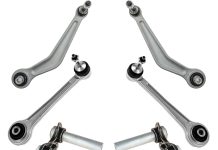Additive Manufacturing (AM), commonly known as 3D printing, has revolutionized the manufacturing industry by enabling the production of complex geometries and customized parts. One crucial aspect of AM, especially in the case of metal powder-based processes like Selective Laser Melting (SLM) and Electron Beam Melting (EBM), is the quality and consistency of the metal powders used. Sieving plays a pivotal role in ensuring the desired powder characteristics, promoting successful AM builds, and achieving high-quality final products.
Purpose of Sieving
Metal powders used in AM must meet stringent requirements regarding particle size distribution, flowability, and purity. Sieving, a technique that involves passing a powder through a mesh or screen to separate particles of different sizes, is employed to achieve these objectives. Sieving ensures that oversized or undersized particles are removed, resulting in a powder with a uniform particle size distribution. This uniformity enhances the packing density of the powder during the AM process, leading to improved layer uniformity, reduced porosity, and enhanced mechanical properties in the final printed part.
Particle Size Distribution
The desired particle size distribution depends on the specific AM process and the material being used. For instance, SLM requires a fine powder with a narrow particle size distribution to ensure accurate and consistent melting during the laser scanning process. On the other hand, EBM might tolerate a slightly broader distribution due to the differences in energy deposition. Sieving is instrumental in achieving the specified particle size range, which directly impacts the build quality and material properties.
Flowability and Packing Density
Powder flowability is crucial for uniform powder spreading and recoating in the AM build chamber. Poor flowability can result in uneven layers, leading to defects in the final part. Sieving can help break up agglomerates and improve powder flow characteristics. Moreover, the consistent particle size distribution achieved through sieving enhances packing density. Higher packing density translates to more efficient powder usage, reduced powder consumption, and minimized wastage.
Quality Control and Reusability
Metal powders are expensive, and their efficient use is essential to cost-effective AM processes. Sieving is a critical step in quality control, ensuring that only powders meeting the specified size and quality standards are used. Additionally, sieving can help rejuvenate used powders. After multiple AM cycles, powders might experience particle agglomeration or contamination. Sieving can help break down these agglomerates and remove impurities, making the powder suitable for reuse.
Challenges and Considerations
While sieving offers numerous benefits, it also presents challenges. For example, extremely fine powders might become prone to clogging the sieve mesh. Aggressive sieving can also cause particle breakage, altering the particle size distribution. Therefore, selecting the appropriate sieve mesh size and optimizing the sieving process parameters are crucial considerations.
Conclusion
In the realm of Additive Manufacturing, metal powder quality significantly influences the success and properties of the final printed parts. Sieving stands as a vital process in ensuring uniform particle size distribution, optimal flowability, and efficient powder usage. By addressing challenges and adhering to precise parameters, manufacturers can harness the potential of sieving to produce high-quality, reliable, and cost-effective AM products.







